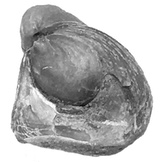Anatomy of a Bryozoan
Bryozoans are colonial animals and those from the type Cincinnatian consist of a series of calcite tubes that house individual bryozoan animals, as well as other structures.
The entire colony is known as a zooarium, which is composed of multiple zooids. The skeleton of each is zooid is called a zooecium.
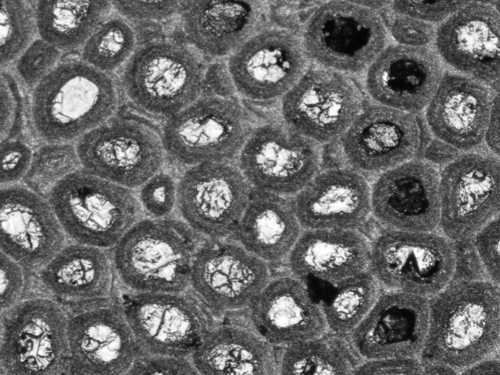
Batostomella in tangential section. Note subrounded zooid apertures, with thick zooecial walls.
Within a zooid, a variety of structures may be present. Diaphragms are flat or curved surfaces that served as the floor under the individual as it grew. Zooids may have none, one, or many diaphragms. Cystiphragms are similar to diaphragms, but are curved surfaces that extend only partway across a zooid or that form a collar around the inside of a zooid. Hemiphragms are similar to diaphragms, but are flat surfaces that project only partway across a zooid.
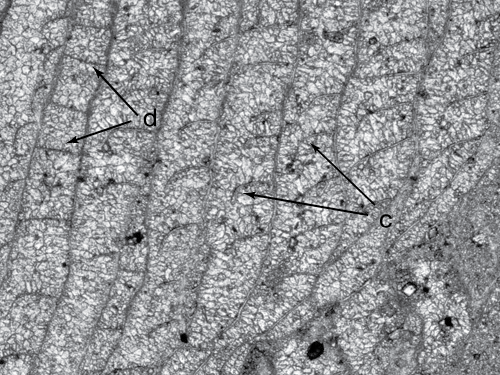
Homotrypa in longitudinal section. Note flat diaphragms (d) that extend all the way across the zooid, and the curved cystiphragms (c) that extend only part way across.
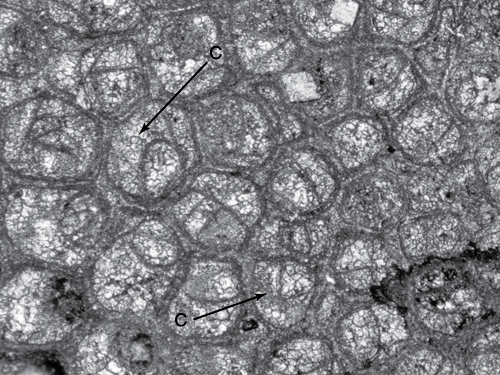
Homotrypa in tangential section. Note curved cystiphragms (c) that form a collar partway around a zooid.
Mesozooids are smaller tubes between feeding zooids and which are often filled with closely spaced diaphragms.
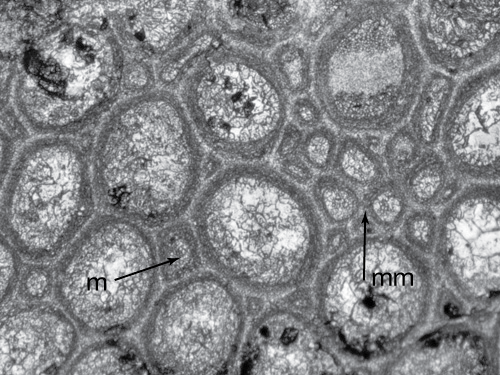
Parvohallopora in tangential section. Note small polygonal mesopores (m), surrounded by much larger zooids, with cluster of mesopores (mm) at macula.
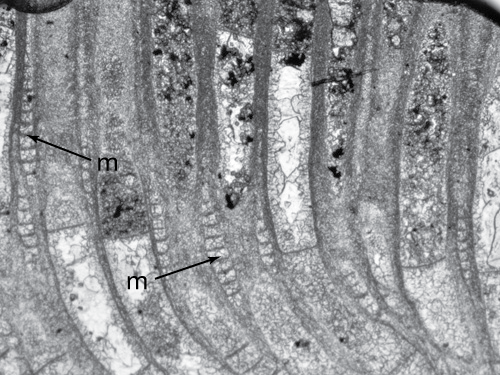
Parvohallopora in longitudinal section. Note small mesopores (m), with closely spaced diaphragms.
Styles (formerly called acanthopores) are rod-like or spine-like structures within or projecting from the walls of a zooid. Some styles consist of rings of laminated calcite and appear in tangential section like knots in wood. Some styles have a clear core of non-laminated calcite.
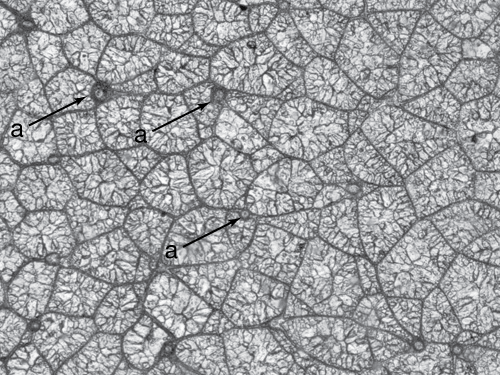
Dekayia in transverse section. Note polygonal zooecial outlines, with large clear-cored acanthopores (a) at wall junctions.
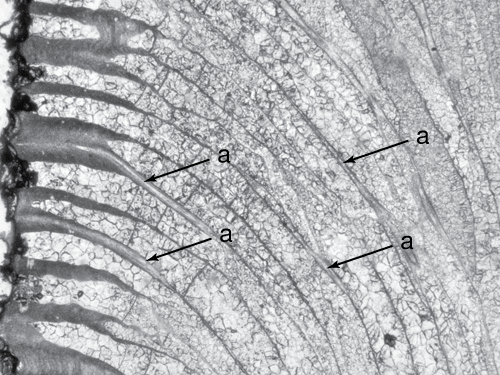
Dekayia in longitudinal section. Note large clear-cored acanthopores (a) and thick zooecial walls in exozone.
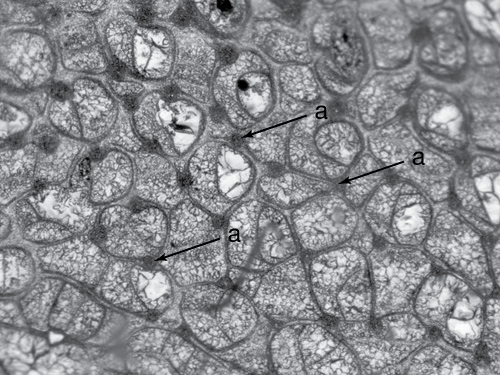
Peronopora in tangential section. Note abundant large and dark acanthopores (a).
Zooids change their orientation as the colony grows. For a branching bryozoan, the zooecial tubes are initially parallel to the branch, and they emerge at the surface at the growing tip of the branch. As the bryozoan grows, these tubes turn towards the side of the branch, and point perpendicular to the branch. As a result, a longitudinal or transverse section will show two distinct zones. The endozone is the portion of the colony in the center of the branch that contains zooecial tubes parallel to the long axis of the branch. The endozone is surrounded by the exozone, where the tubes have turned and have become perpendicular to the branch. The zone of turning is often called the zooecial bend.
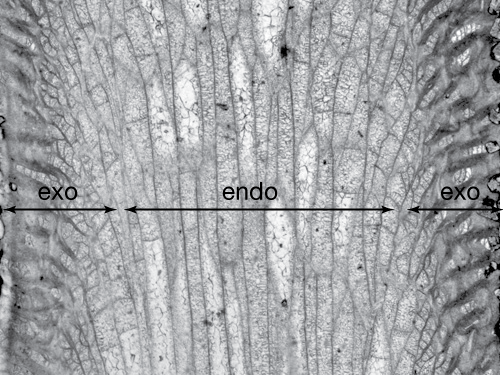
Homotrypa in longitudinal section. Note endozone (endo) in which zooids grow parallel to the branch (vertical here), and the exozone (exo), in which zooids turn and grow towards the external surface of the colony. Note the wall thickening in the exozone and the increase in number of diaphragms and cystiphragms.
